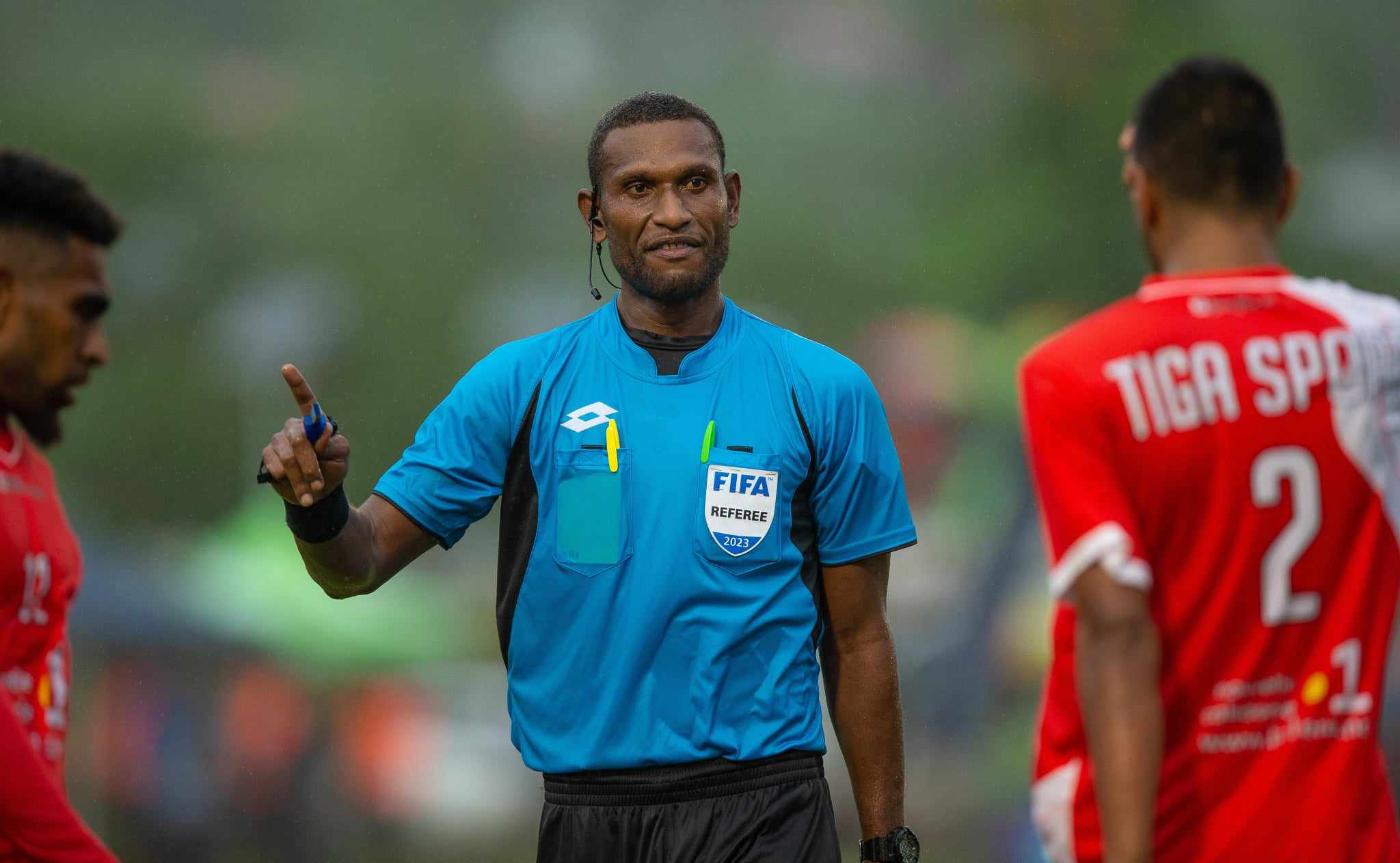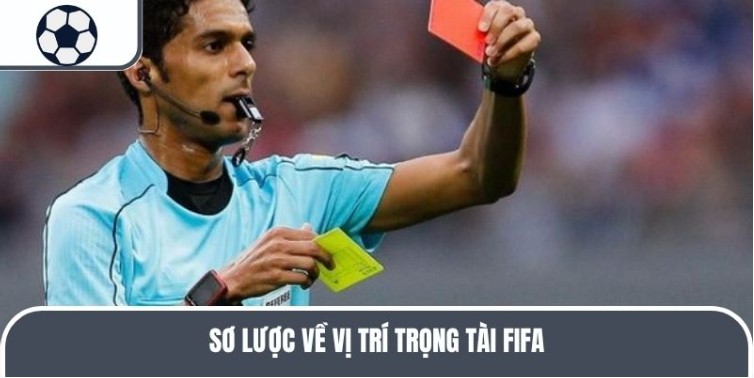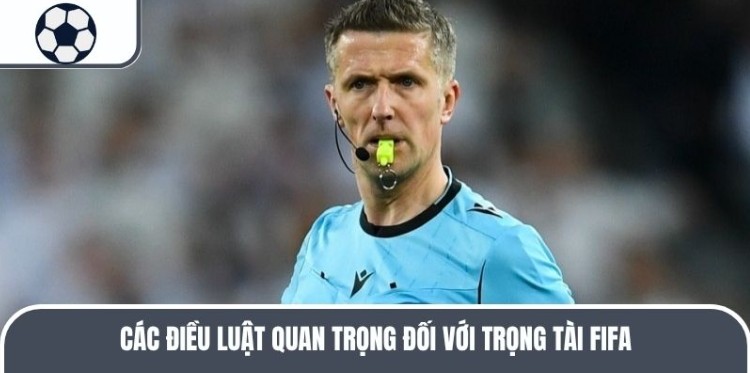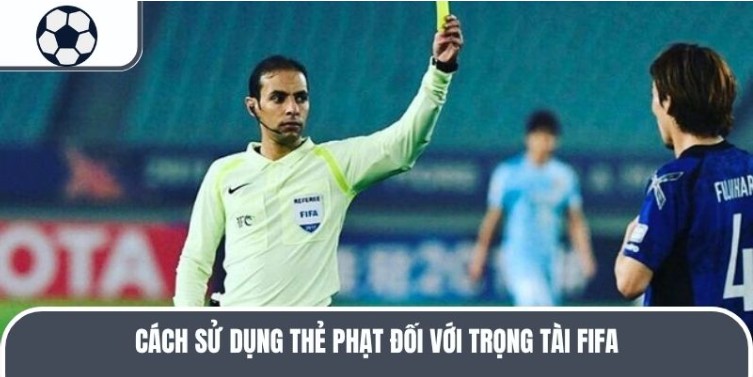FIFA Referee: The Judge of Justice on the Field

FIFA Referee is the person who “holds the scales of justice”, maintaining fairness in every match. They must be experienced, comply with the regulations and ensure that all decisions are careful and accurate. Learn about the most relevant information of this important position with keonhacai right in the following content.
Overview of the FIFA Referee position
FIFA Referees are talented people sent from member countries, after testing and screening, they will receive a certificate from the World Football Federation. They are qualified to officiate matches under FIFA such as the World Cup, Club World Cup, etc.
In Vietnam, referee training has been developed and invested in a systematic way to be able to participate in the ranks of FIFA-level referees. And all efforts have been rewarded when in 2021 we had 2 faces on the list, Hoang Ngoc Ha and Ngo Duy Lan. This is considered a good sign for national football, affirming Vietnam’s position and capacity in the international arena.

Regulations on the number of FIFA referees
In a match, there will be 4 referees divided into different positions, including: 2 sideline referees, 1 table referee and 1 main referee. Each position will undertake certain tasks, specifically:
Main referee
The main referee is the person who always follows the players holding the ball, making the final decision in all situations. This position requires endurance, good physical strength and speed. In addition, they also need to have sharp eyes and a cool head to be able to distinguish right from wrong, ensuring fairness for the match.
Sideline Referees
The 2 FIFA sideline referees will be responsible for catching fouls in cases where the ball rolls out of bounds. When a foul is detected, the linesman will wave his flag to signal the main referee to decide the penalty. The person considered for this position must have good eyesight and stable physical strength to move up and down the sideline throughout the match.
Table Referee
In the FIFA referee team, there will be 1 table referee who will be responsible for catching fouls that the 3 referees on the field cannot follow in time. At this time, they need to notify the main referee to make the final decision. In addition, they also take on the role of supervising the substitutions of the two teams, managing the number of extra minutes, etc.
Important rules for FIFA referees
When controlling a football match, the referee must absolutely comply with some specific rules as follows:

Hand signals to know
They need to grasp the hand signals and use them in each case, the symbols that we often encounter in the match are:
- Enjoying the advantage: The referee raises both hands high and points forward to allow the team that commits a minor foul to enjoy the advantage.
- Point forward and blow the whistle to signal a serious penalty and a team will be awarded a free kick.
- To signal an indirect free kick, the FIFA referee will raise one hand and blow the whistle.
- The referee needs to blow the whistle and point his hand to the penalty spot to signal a penalty.
- When a player commits a foul, the referee will hold the penalty card and raise it.
- The referee performs a rectangle drawing gesture as a symbol for VAR to check the previous situation.
- When the player touches the ball, the referee performs a gesture of touching one hand to the other hand. At this time, the match is forced to stop and the ball is transferred to the opponent.
How to use penalty cards for FIFA referees
FIFA referees will use yellow or red cards to punish players and control the match situation. You can refer to the information page from the tin tức kèo nhà cái to learn how to use these 2 types of cards below:
- Yellow cards are used to warn players about a certain violation. If they receive 2 yellow cards, the player must leave the field.
- When a player receives a red card, it means they have committed a serious violation and must leave the field immediately.

FIFA referee screening standards
To be a FIFA referee, one must meet the following strict standards:
- To nominate a candidate, the country must have its own national championship.
- Each country can only submit a limited list of referees based on the number announced by FIFA each year.
- Nominated referees must have participated in at least 2 years of top-level tournaments.
- Referees must pass a type 1 health and fitness test to be eligible for further assessments.
- If a female referee wants to officiate men’s football matches, she must pass a fitness test for male referees.
Conclusion
The above is the information you need to know about FIFA referees, one of the dream positions of many people. To be selected, the nominee must pass many tests and have good results in national tournament matches. Hopefully, Keo Nha Cai’s sharing will help you have an overview.

![boy-attitude-shayari Boy Attitude Shayari in Hindi [Top 30] बॉय एटीट्यूड शायरी](https://www.alonesadshayari.com/wp-content/uploads/2024/09/boy-attitude-shayari-768x356.webp)




